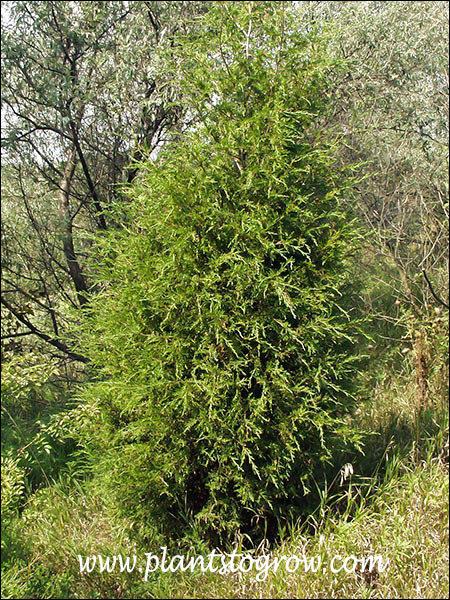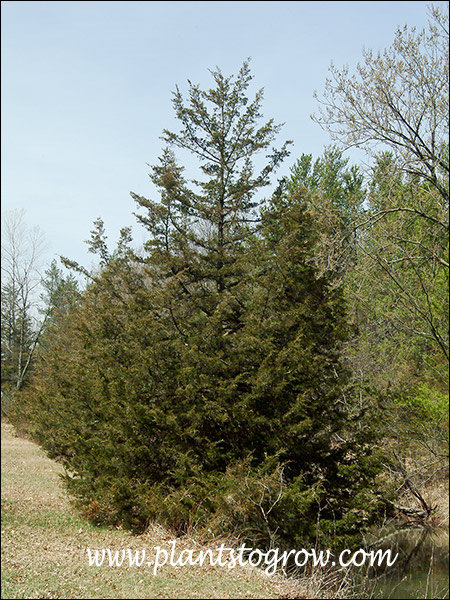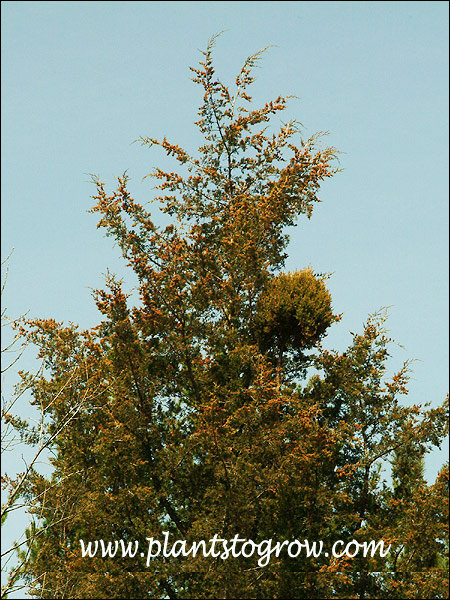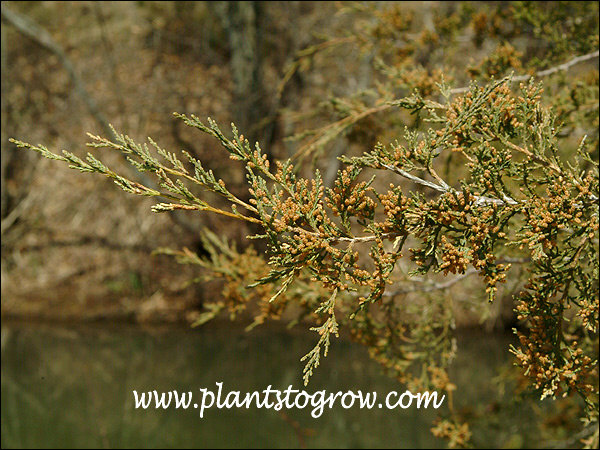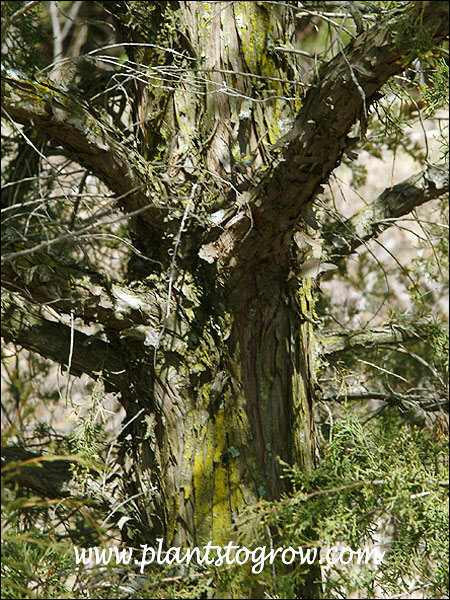| Description | A native conifer that once was the main wood used in the manufacture of pencils. Even though it is erroneously called a Cedar (Thuja) it is a Juniper. |
|---|---|
| Pronunciation | (ju-NIP-er-us)(ver-jin-ee-A-na) |
| Plant Type | All Plants, Shrubs Coniferous |
| Hardiness Zone | 2-9 |
| Sunlight | Seedling are shade tolerant but older plants prefer full sun. |
| Moisture | Tolerates a wide range of moisture conditions. |
| Soil & Site | Found growing in a diverse range of soils. Such as deep, thin, rocky, sandy, wet, etc. Tolerates ph from 4.7-7.8. |
| Flowers | Flowers are inconspicuous. Plants are dioecious, having both sexes on the same tree |
| Fruit | Forms small berry-like cones that contain 1-4 seeds. Cones mature from green to greenish white to bluish white to blue. |
| Leaves | Foliage of seedlings and new branches are prickly, pointed and awl shaped. Older branches have closely over lapping scales. |
| Dimensions | The size of the plant depends on the site. Under optimum conditions it can reach over 50-60 feet in 50 years. On limestone soils in Tennessee and Kentucky it has reached 100 feet. There are to distinct physical forms a tight pyramidal (spire) and a more open spreading. |
| Maintenance | Can be infected with the Cedar Apple Gall (Gymnosporangium juniperus-virginianea) |
| Propagation | seeds |
| Misc Facts | Native to southeastern Canada and eastern United States. Until about 1910 after most of the quality Red Cedar where cut down, it was the main wood used for pencils. Lumber was very popular during the colonial days. Mainly used today to line cedar chests and closets to ward off the moths. Most of the Red Cedar used in the landscape are cultivars of the species plant. Cultivars such as: glauca, Burkii, Canaertii, Spartan, etc. to name a few. |
| Notes & Reference | #01-Manual of Woody Landscape Plants (Michael Dirr), #39-The Natural History of Trees (Donald Cultrose Pattie) |

Cart
